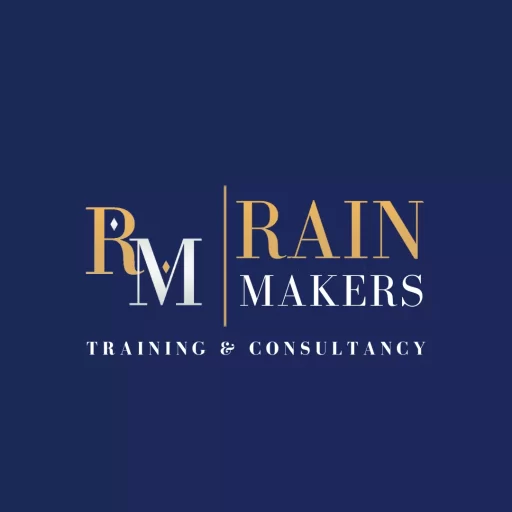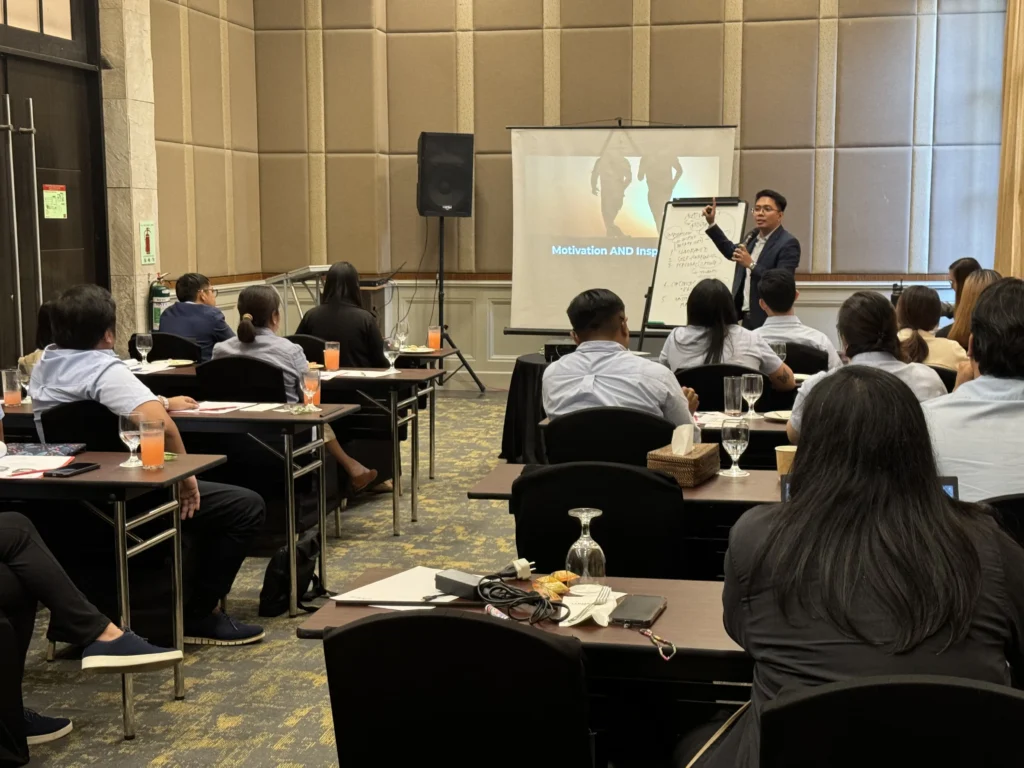The Kirkpatrick Evaluation Model: A Guide to Training Evaluation
You can’t improve what you cannot measure. That’s why evaluating the effectiveness of training programs is essential for organizations seeking to enhance employee performance and achieve business goals.
The Kirkpatrick Evaluation Model is one of the most widely used frameworks. Developed by Dr. Donald Kirkpatrick in the 1950s, this model provides a structured approach to assess training programs at four distinct levels. It helps organizations understand how well training initiatives work and what can be improved based on insights and assessments. This has been used as a framework for training the trainers program to enhance in-house technical trainers.
In this guide, we’ll explore the key aspects of the Kirkpatrick Model, its four levels, practical examples, assessment strategies, and tips for effective implementation.
What Is the Kirkpatrick Evaluation Model?
The Kirkpatrick Model is a systematic framework for evaluating the effectiveness of training programs. It assesses training across four levels:
- Reaction: How participants feel about the training
- Learning: What knowledge or skills participants gained
- Behavior: How participants apply their learning on the job
- Results: The impact of the training on organizational outcomes.
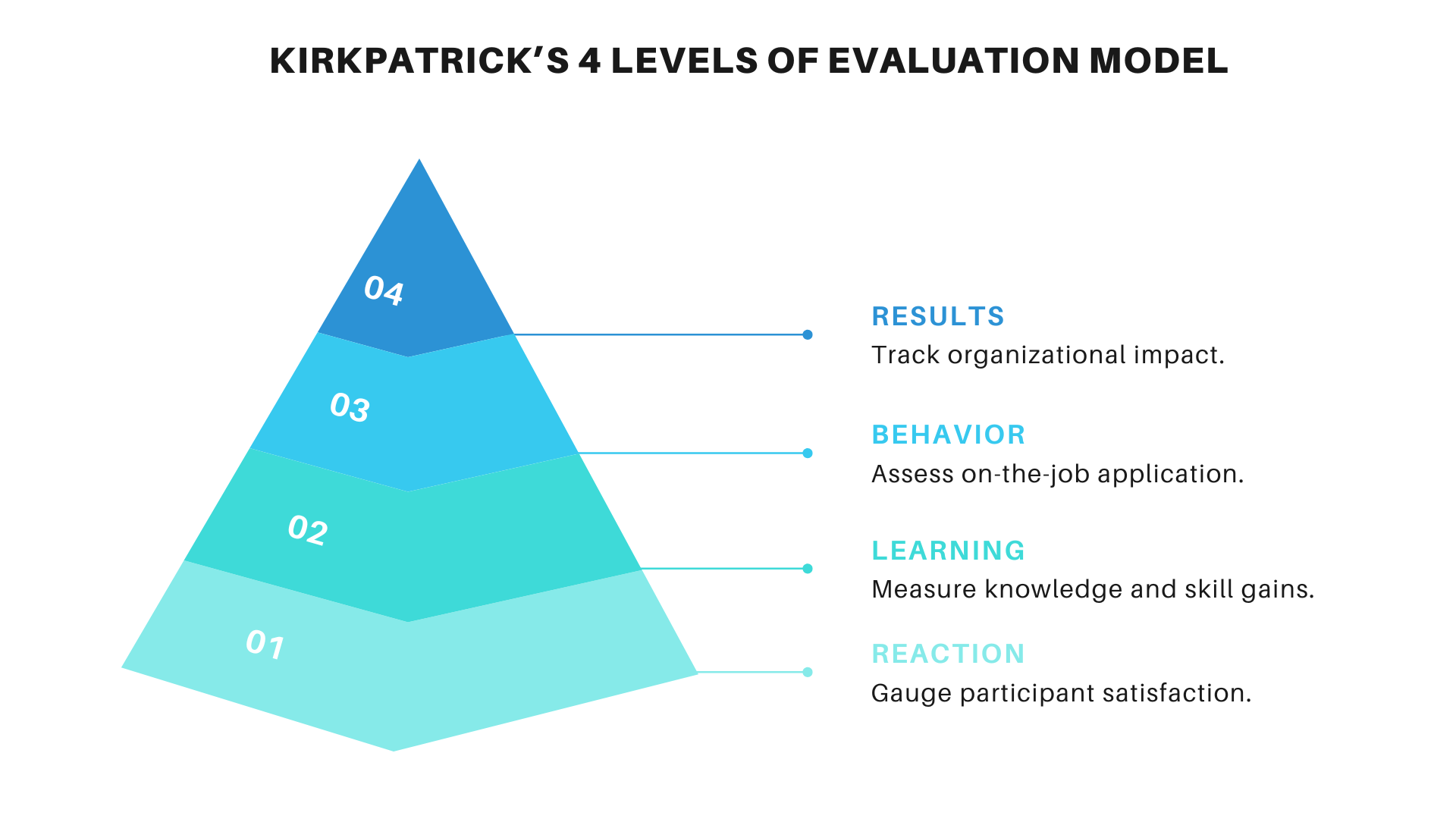 Each level builds on the one before, offering a comprehensive view of the training’s success. Organizations use this model to measure immediate feedback, learning progress, practical application, and long-term outcomes.
Each level builds on the one before, offering a comprehensive view of the training’s success. Organizations use this model to measure immediate feedback, learning progress, practical application, and long-term outcomes.
The 4 Levels of Evaluation
1. Reaction
This level focuses on participants’ immediate responses to the training. It answers questions such as:
- Did participants enjoy the training?
- Was the material relevant to their job?
- Was the trainer effective?
How It’s Measured:
- Surveys or feedback forms filled out after the training.
- Questions on content quality, engagement, and trainer performance.
Example: After a customer service training session, participants complete a survey rating the usefulness of the course and the instructor's ability to explain concepts clearly.
Pro Tip: Make it a requirement that they answer surveys or feedback forms. For example, they could only get their certificates if they answered the forms.
2. Learning
This level evaluates the knowledge or skills participants gained during the training. It aims to determine if the training objectives were met.
How It’s Measured:
- Pre- and post-training assessments.
- Quizzes, tests, or practical exercises.
- Observing participant performance during training.
Example: Participants in a software training program complete a hands-on exercise at the end of the session to demonstrate their understanding of key features.
Pro Tip: Include assessments related to your corporate training topics in your handouts - so participants can easily understand that it’s part of the training to have this assessment.
3. Behavior
At this level, the focus shifts to how participants apply what they learned in their work environment. It examines whether the training has led to changes in behavior or skills usage on the job.
How It’s Measured:
- Manager or peer feedback on observed behavior changes.
- On-the-job evaluations or performance metrics.
- Follow-up surveys were conducted weeks or months after the training.
Example: An organization tracks whether employees who completed conflict resolution training use the taught techniques to handle disputes more effectively. This would involve having workshops and role-play sessions to apply what has been learned from the session immediately.
For instance, in my sales training program, we do a SEED selling role-playing activity to help participants apply my selling framework to their daily activities.
4. Results
The final level measures the broader impact of training on organizational objectives. It assesses whether the training contributed to business goals like increased productivity, higher customer satisfaction, or cost savings.
How It’s Measured:
- Key performance indicators (KPIs) before and after training.
- ROI analysis of the training program.
- Long-term business performance data.
Example: After a sales team undergoes training to improve closing techniques, the company observes a 15% increase in sales revenue in the following quarter.
This requires gathering data before the actual training delivery so you have a benchmark of the exact percentage you have to improve. Whether it’s a sales quota percentage, CSAT score, or any metric relevant to the skillset you’re training at, it is essential to measure it before the training and use it as a benchmark for improvement.
Applying the Kirkpatrick Model to Training Evaluation
Organizations often use the Kirkpatrick Model at various stages of the training process to ensure a comprehensive evaluation. Here’s how it can be applied:
1. Pre-Training
- Define clear learning objectives that align with organizational goals.
- Establish benchmarks for success at each of the four levels.
- Develop tools and methods for collecting feedback and assessing learning.
2. During Training
- Use real-time feedback tools like quick polls or quizzes to gauge participant engagement.
- Include activities like role-playing or group discussions to evaluate immediate learning.
- Ensure trainers monitor participant involvement and address questions promptly.
3. Post-Training
- Conduct follow-up assessments to measure knowledge retention.
- Gather feedback from managers to assess behavior changes in the workplace.
- Analyze business performance metrics to evaluate long-term results.
Strategies for Assessment and Tools
Implementing the Kirkpatrick Model effectively requires thoughtful planning and the right tools. Below are strategies for each level and recommended tools:
Level 1: Reaction
Strategies:
- Design concise feedback forms with specific questions.
- Include open-ended questions for qualitative feedback.
Tools:
- Google Forms, SurveyMonkey, or other survey tools.
Level 2: Learning
Strategies:
- Create pre- and post-tests aligned with learning objectives.
- Use practical exercises or scenarios for hands-on assessment.
Tools:
- Learning management systems (LMS) with built-in assessment features like Moodle or TalentLMS.
Level 3: Behavior
Strategies:
- Schedule follow-up evaluations with managers.
- Develop a checklist for observing behavioral changes.
Tools:
- 360-degree feedback tools or performance-tracking software like Workday.
Level 4: Results
Strategies:
- Compare KPIs from before and after the training program.
- Conduct cost-benefit analyses to measure ROI.
Tools:
- Business intelligence software like Tableau or Power BI.
Pro Tips for Implementing the Kirkpatrick Model
- Align Training Goals with Business Objectives: Identify specific business challenges and design the training to address them. Then, meet with key stakeholders to understand the business landscape and particular training needs. Finally, a training needs analysis must always be conducted before any training delivery.
- Gather Feedback Continuously: Collect data at multiple points (before, during, and after training) to ensure a comprehensive evaluation.
- Use SMART Metrics: Make evaluation metrics Specific, Measurable, Achievable, Relevant, and Time-bound.
- Engage Managers: Involve managers in observing behavior changes and providing feedback. Managers are usually the bottleneck for training (it's just a reality), so involve them early in the process.
- Leverage Technology: Use digital tools to automate surveys, assessments, and data collection.
- Report Insights Clearly: Present findings in a clear, actionable format to stakeholders, focusing on key outcomes and recommendations. If you’re a training manager, get feedback from your team on what to do and how to improve in-house training programs.
Maximizing Training Impact with the Kirkpatrick Model
The Kirkpatrick Evaluation Model provides a structured approach to measure training effectiveness across four levels. From gauging participant reactions to evaluating business results, this model helps organizations identify strengths and areas for improvement in their training programs.
Applying the strategies and tools outlined in this article can ensure that your training initiatives deliver meaningful results and drive organizational success.
70 20 10 Rule: How to Optimize It for Learning and Development
The 70-20-10 rule is a widely fundamental framework in learning and development (L&D). It is also the basis of my learning structure when I design corporate training programs and packages for our clients.
This rule defines the optimal mix of learning and sources for effective professional growth, especially for managers and leaders. It was developed in the 1980s by Morgan McCall, Michael M. Lombardo, and Robert A. Eichinger at the Center for Creative Leadership.
In this guide, we’ll explore the 70-20-10 model, its components, and my practical insights on applying this for leadership development, with real-life examples so that you can visualize it yourself.
What Is the 70-20-10 Rule?
The 70-20-10 rule suggests that learning happens in three ways:
- 70% through experiential learning (on-the-job experiences)
- 20% through social learning (interactions with others)
- 10% through formal learning (structured courses and training)
While in real-life scenarios, you’ll find variations of this percentage, to be honest, but the principle remains the same. Not every learning and development comes from simply attending courses and training programs. Most active learning happens in on-the-job experiences and through coaching and mentoring (which has become a trend in talent development today).
The Three Components of the 70-20-10 Rule
70% Experiential Learning
Experiential learning focuses on learning by doing. It involves tackling real-life challenges, solving problems, and applying skills directly in the workplace. Employees apply what they have learned from formal and informal education to tackle daily work challenges in this type of learning.
Experiential learning is the most significant contributor to growth because it allows individuals to learn in a context relevant to their roles. Instead of simply acquiring knowledge, they learn, unlearn, and relearn by doing the task. Their knowledge is tested when they encounter obstacles to accomplishing it so they can find efficient and better ways to solve problems.
One of the best examples of experiential learning is leadership development. It covers these initiatives and skills assessments to learn and grow from work experiences.
Project Ownership: A manager leads a cross-functional team to execute a new initiative, learning project management and team dynamics. By having autonomy on the subject, the employee can own the decisions and outcomes arising from every task accomplished.
If you are a leader, one way to ensure your subordinates learn from their work is to inculcate project ownership. The more they make decisions and achieve wins, the more they want to accomplish.
Problem-Solving: For example, addressing workplace conflicts teaches communication and decision-making.
Most conflicts cannot be solved simply by attending a problem-solving and conflict-management seminar. However, it would help if the corporate trainer smoothly transitioned the session to discuss issues within teams openly.
In reality, this doesn’t happen in most cases. Conflicts get burned in the ground, which causes malfunctions in relationships, resulting in more miscommunication and inefficiency.
Stretch Assignments: For instance, a marketing professional might take on a sales role, gaining new insights and broadening their skill set.
Experiential learning becomes more apparent in new roles and projects. Since the newly trained professional doesn’t have practical experience with the new task, it makes sense that they would make more mistakes than in previous work/tasks/projects.
The coaching and mentoring hat (20% social learning) must be worn here. If the leader becomes more of a coach or mentor than a boss, the need for further refinement of skills that can only be achieved through constant practice will be better understood.
There are a couple more examples, but you should now understand how critical 70% of experiential learning is to learning and development.
20% Social Learning
Social learning happens through interaction and collaboration; for leaders, it refers to coaching and mentoring.
Through daily work interactions and professional relationships, it becomes simpler for professionals to gain knowledge and practical experience from others’ expertise and experiences.
To give you context, in leadership development, someone in a mentorship program looks like this: a junior manager learns leadership skills by shadowing a senior executive. Through actual observation of the real work, the junior manager understands the nuances and challenges of the new task.
Even during lunch breaks, the junior manager can learn additional information from his superior, further expanding his work knowledge.
A feedback culture is an example of social learning applied to leadership development. Team members provide constructive feedback during reviews, enabling individual growth.
Giving feedback can be formal or informal, as nowadays, most professionals are busy with their daily activities. Sometimes, it doesn’t fit into their schedules to have as frequent feedback sessions as it used to be.
You’ll find many managers giving feedback after an actual task. For instance, a sales manager giving direct feedback right after a presentation of his sales presentation with a prospective client. That feedback is more effective as the timing is right after a task is delivered, and more often than not, it is more retainable in the professional’s mind.
Topping it off as part of social learning in leadership development can help employees see improvement through the eyes of their peers, whether feedback from the same department or other departments.
Sharing best practices regarding what works in the company can be a good source of social learning. It is relevant to the employees' work and adds more value to the overall KPIs of the team or department being assessed.
10% Formal Learning
We couldn’t ignore the remaining 10% as it often matters.
Formal learning refers to structured training programs, workshops, or e-learning courses. While it contributes the least in percentage, it provides foundational knowledge that can be applied in practice.
When employees join a company, they typically undergo morning sessions to gain fundamental knowledge about their work, team, department, and company. This gives them a foundational understanding of why they do what they do and how they perform at work.
In the leadership development context we mentioned earlier, formal learning could be anything in corporate training, such as attending a leadership training workshop to learn about emotional intelligence, completing an online course on conflict resolution techniques, or simply participating in seminars on emerging industry trends.
All these can add to the employee's formal learning, which can further develop as they apply all these to their work. It’s about application, as we say and know.
Many multinational companies in the Philippines offer their employees a series of modules and structured formal learning. Conversely, startups have difficulty doing this, as they focus more on their operations and often neglect their talent development. In this case, outsourcing to the top corporate training providers is a more viable option.
How to Implement the 70-20-10 Model?
This section warrants a new post, as there are many things to do when implementing the 70-20-10 rule in learning and development. As such, giving you a start, this list gives you more actionable tips than any other guide on this subject.
1. Make Experiential Learning the Core (70%)
This applies to any company size, industry, and revenue. All employees need a solid experiential learning culture where they can see themselves growing inside the company. As most Gen Z will constantly reiterate during their interviews, this is essential for finding personal and professional growth in their companies.
Here are some tips to make experiential learning part of your systems in your talent development:
- Assign employees challenging projects that align with business goals to develop hands-on problem-solving skills.
- Rotate employees through different roles or departments to broaden their skill sets and perspectives.
- Incorporate on-the-job training for real-time learning in high-impact scenarios.
2. Foster Social Learning Opportunities (20%)
This tip is easier said than done, as it depends mainly on the team and company's culture and how the management manifests and leads by example in ensuring employees capitalize on learning opportunities.
Best practices in fostering social learning opportunities include:
- Pair employees with mentors to provide guidance and real-world insights.
- Host regular peer-learning forums or cross-department workshops to share knowledge.
- Encourage feedback loops during team meetings to integrate learning into daily operations.
3. Deliver High-Impact Formal Training (10%)
This is what Rainmakers, as a corporate training provider, specializes in. We deliver high-impact corporate training programs to clients of different sizes in teams, organizational structure, and training needs.
Whether you want to do it in-house or outsource, corporate training programs must have any of these - you can do as action plans for your teams as well:
- Create short, targeted workshops or online modules addressing specific competency gaps.
- Tailor learning materials to align with immediate organizational priorities and goals.
- Integrate post-training follow-ups to connect concepts to workplace practices.
You can check out our guides on how to conduct leadership training, its cost and pricing models, and the best leadership training programs in the Philippines.
4. Blend the Learning Methods
You won’t often find a single learning method in practice. So, blending all these methods and rules will be helpful in many of the observations for learning and development.
Few tips on how to do it:
- Start with structured training and apply new skills in workplace challenges (70%).
- Reinforce training outcomes by assigning mentors or facilitating group discussions (20%).
- Encourage employees to document and share key takeaways from their experiential learning.
5. Continuously Monitor and Adjust
You can only ensure the effectiveness of an activity if you measure it so you can continuously adjust for more improvements. Here are some things you can do to adjust the learning initiatives:
- Track progress using measurable outcomes like skill improvements or project success rates.
- Collect feedback from participants and mentors to refine learning approaches.
- Regularly evaluate the alignment of learning initiatives with business goals to ensure
Optimize Learning and Development
We are at an age where not learning is costly for companies and individuals. Using the rule we have - 70-20-10 and other fundamentals and trends in learning and development helps us better optimize our learning and development interventions in companies.
Organizations can create programs that drive measurable results by focusing on experiential, social, and formal learning in the proper proportions. Strengthening the synergy between these components ensures maximum impact, helping individuals and teams grow effectively.
Adopting the 70-20-10 model requires intentionality and commitment. However, proper implementation can transform how organizations approach employee development, paving the way for long-term success.
Top Training Providers in the Philippines 2025
In a fast-paced, competitive environment like the Philippines, businesses and individuals continuously seek professional growth. Training providers play a vital role in equipping people with the skills and knowledge they need to thrive.
Below is a curated list of the top training providers in the Philippines in 2025, highlighting their specializations and unique value propositions.
1. Rainmakers Training and Consultancy
At Rainmakers, our mission is to provide top-tier corporate training solutions tailored to meet your organization’s specific needs. We specialize in Leadership and Management, Presentation Skills, Digital Marketing, and Sales Training. Whether you’re enhancing managerial capabilities or boosting sales performance, Rainmakers is your partner in success.
Why Choose Rainmakers?
End-to-End Training Programs Rainmakers delivers comprehensive training solutions—from conducting a thorough Training Needs Analysis (TNA) to implementing customized programs and evaluating their effectiveness. This ensures measurable results that align with your business objectives.
Practitioner-Led Expertise Our lead trainer, Venchito Tampon, brings real-world experience to the table. As a successful entrepreneur managing multiple ventures, he shares actionable insights that bridge theory and practice, enabling participants to apply what they learn immediately.
Local Expertise with Global Reach Rainmakers combines its deep understanding of the local market with global best practices to provide training solutions that are culturally relevant and internationally competitive.
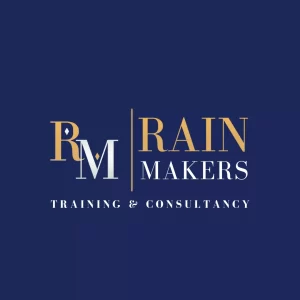 Specializations:
Specializations:
- Leadership and Management Training: Develop impactful leaders capable of driving organizational success.
- Presentation Skills Training: Equip teams to deliver high-impact presentations with confidence.
- Digital Marketing Training: Stay ahead in the digital age by mastering modern marketing techniques.
- Sales Training: Empower your salesforce with techniques to close deals and build lasting customer relationships.

Rainmakers focuses on actionable, hands-on training designed to drive measurable improvements in workplace performance. With a proven track record of success, Rainmakers stands as a trusted partner for organizations aiming to unlock their full potential.
2. MSS Business Solutions
MSS Business Solutions is dedicated to producing observable and measurable results for individuals and organizations. With a proven track record in Strategic Planning, Team Building, Communication, and Customer Service, MSS ensures that your talent development investments yield tangible outcomes.
Why Choose MSS?
Customized Solutions MSS begins with a scientific assessment of your organization’s needs. This ensures that every program aligns with your company’s goals and values.
Diverse Training Formats Whether you need on-site, off-site, or online training, MSS offers flexible delivery modes, including virtual platforms like Zoom, Microsoft Teams, and Google Meet.
Innovative Approaches MSS incorporates entertainment into its training methods to make learning engaging and memorable. Founder Myron Sta. Ana, also known as the #CorporateEnterTrainer, brings energy and humor to every session, ensuring there’s never a dull moment.
Specializations:
- Strategic Planning: Enable leaders to align resources and initiatives for long-term success.
- Team Building: Foster collaboration and unity within teams.
- Communication Training: Improve interpersonal and professional communication skills.
- Customer Service: Equip employees to deliver exceptional service and enhance customer loyalty.
MSS Business Solutions’ holistic approach ensures long-lasting results, making it a go-to provider for organizations aiming to empower their workforce.
3. Inspire Leadership Consultancy
Inspire Leadership Consultancy is synonymous with excellence in executive development. Specializing in Executive Leadership and Change Management, the firm empowers leaders to navigate the complexities of modern business environments.
Why Choose Inspire Leadership?
World-Class Expertise Founded by Francis Kong, a recipient of the Outstanding Filipino (TOFIL) Award, Inspire Leadership draws from his decades of experience as a business columnist, entrepreneur, and leadership coach.
Practical Insights Francis Kong’s expertise spans leadership development, entrepreneurship, and personal growth. He has authored 19 books and provided mentorship to top executives in the Philippines.
Specializations:
- Executive Leadership: Build strategic decision-making and visionary leadership skills.
- Change Management: Equip leaders with tools to drive and manage organizational change effectively.
Inspire Leadership’s programs are designed to develop high-performing executives who can inspire their teams to achieve extraordinary results. Its focus on strategic leadership ensures organizations remain competitive in today’s ever-changing landscape.
4. BusinessWorks Inc.
Led by Anthony Pangilinan, BusinessWorks Inc. specializes in developing individuals and organizations through tailored training programs and consulting services.
Why Choose BusinessWorks?
Broad Expertise With over 25 years of experience, Anthony Pangilinan brings a wealth of knowledge in leadership, communication, and organizational development.
Social Responsibility BusinessWorks also engages in advocacy projects, including initiatives to rescue and support vulnerable children through its partnership with Called to Rescue Philippines.
Specializations:
- Leadership Development: Cultivate leaders who can inspire and drive change.
- Organizational Communication: Enhance collaboration and understanding within teams.
- Advocacy Training: Equip individuals to make a positive societal impact.
BusinessWorks Inc. combines a strong commitment to excellence with a passion for driving positive change in both individuals and organizations. Its impactful training programs are designed to inspire and empower.
5. Breakthrough Leadership Management Consultancy, Inc.
Breakthrough Leadership specializes in Leadership and Management, Change Management, and Training Design and Delivery. With a focus on practical applications, Breakthrough Leadership helps organizations achieve sustainable growth.
Why Choose Breakthrough Leadership?
Proven Expertise Led by Boris Joaquin, an internationally certified corporate trainer and columnist, Breakthrough Leadership offers world-class training tailored to the Filipino context.
Holistic Development Breakthrough’s programs address both technical competencies and soft skills, ensuring participants are well-rounded leaders.
Specializations:
- Leadership and Management: Develop effective leaders at all organizational levels.
- Change Management: Navigate the complexities of organizational transitions with ease.
- Training Design and Delivery: Craft and deliver impactful learning experiences.
Breakthrough Leadership is committed to transforming leaders into catalysts for positive change in their organizations. Its dynamic training modules ensure that businesses are equipped to face modern challenges with confidence and skill.
These top training providers in the Philippines stand out for their expertise, innovation, and commitment to delivering impactful learning experiences. Whether you’re looking to enhance leadership capabilities, improve communication, or drive organizational change, these firms offer specialized programs to meet your needs. By choosing the right partner, you’re investing in the success and sustainability of your organization.
How to Conduct Leadership Training: Step-by-Step Guide For Effective Design and Delivery
Leadership training is a cornerstone of talent development in many organizations. The more equipped leaders are, the better the organization's future and ability to sustain success.
Many organizations' leadership training programs are attractive to younger workforce generations, especially Gen Z, who prioritize career growth and skill development (based on Deloitte Global 2024 Gen Z and Millennial Survey).
Truthfully, leadership training is essential for talent recruitment and retention, so every L&D and HR practitioner must know how to implement the programs effectively.
In this guide, I’ll walk you through how to conduct leadership training and even share some of my experiences as a corporate trainer facilitating results-oriented leadership training programs.
How to Conduct Leadership Training?
1. Secure Top Management and Stakeholder Support
Any success of leadership training programs begins with buy-in from top management and key stakeholders.
While this shouldn’t be at the top of the conservative list when conducting leadership training, I find it a bottleneck for many HR practitioners as they move to the next phase of training—delivery. They could design the training program well enough, but they would find it difficult to ask participants to attend the training if it is not fully supported by key stakeholders right at the start.
Before anything else, create a business case or proposal and present it to top management and key stakeholders. Share your plans and clearly communicate the benefits of the leadership program, including its potential impact on employee work, performance, retention rates, and organizational growth.
You may include case studies and data reports to build the credibility of your proposal. It is best if you can find available data that’s locally contextualized here in the Philippines.
If you are a learning and development manager, you can establish a steering committee to oversee the training initiative, from requests for training budgets to the evaluation of the leadership training program.
2. Conduct a Training Needs Analysis
By identifying gaps in leadership competencies, you’ll have a solid benchmark of where to start your leadership training. This will also be the basis of your training evaluation if you can close any leadership competency gaps.
Competency gaps could be either problem-focused or growth-focused. Problem-focused competency gaps refer to any problems in the knowledge, skills, and attitude of your leaders that need to be addressed; otherwise, they would be detrimental and, worse, could affect the culture of the team and organization.
Conversely, growth-based gaps refer to potential improvement in the competencies—including specific KSA (knowledge, skills, and attitude of your leaders)—that you want your participants to level up with.
You can check out this guide on how to do training needs analysis.
Here are a few TNA gathering methods:
- Focus group discussions (FGD)
- Interviews with key beneficiaries
- Job materials and work documents
- Surveys and questionnaires
- Feedback systems
- Incident reports and problem logs
These are just a few, but they can help you start gathering more information about your leadership training needs.
3. Prepare a Proposal and Budget
Prepare a TNA plan and proposal after conducting a training needs analysis. The document should outline the program’s objectives, expected outcomes, and financial requirements.
Not only will it help you secure funding, but it will also provide a guide for management and stakeholders to understand the process of your leadership training.
Here’s what to include in the proposal:
- Training objectives and alignment with business goals.
- Target audience and selection criteria.
- Detailed cost estimates (e.g., trainer fees, materials, venue, food, etc..).
- A timeline for development and delivery.
Budgeting is critical—factor in all possible expenses and present a cost-benefit analysis to demonstrate ROI. This is where you need to research the available options for conducting a leadership training program: doing it in-house with your trainer or hiring a corporate training provider to facilitate and deliver the program.
You may want to check out this guide on how much leadership training costs in the Philippines.
Now, this goes to our next step:
4. Decide Between In-house or Outsourced Training
There are many upsides and drawbacks to conducting leadership training programs or outsourcing to a corporate training provider.
Doing it in-house is less costly and can foster and develop an internal learning culture, as participants are challenged to learn from each session conducted by internal trainers.
I find this effective for multinational companies with more than 100 employees. In this particular case, they simply hire in-house trainers who specialize in competencies such as leadership and are accredited in many local and global certifications to be credible enough to do facilitation in-house. It is a different story if you’re working in a startup or SME, as it doesn’t have this type of leverage.
Outsourced training is ideal for accessing expert trainers who can deliver leadership training at the highest level. Given that these trainers have conducted the same program multiple times and can customize it based on the context of the organization and its participants, you’ll see a much better outcome from their training.
Another overlooked advantage of outsourcing leadership training is getting fresh perspectives outside your organization. Typically, when learning revolves around each company employee, there is a tendency for limited learning. If you hire an external leadership trainer, you can acquire new insights and best practices on specific leadership competencies that could elevate the skills of your target participants.
These insights may include patterns that the corporate trainer assesses in his career of training different sets of clients—thus allowing him to see which strategy, tool, or tip actually works for a certain industry.
Another thing: the best upside for getting outside trainers is the training content itself—you wouldn’t simply access it if you conducted leadership training in-house. Either you attend public seminars offered by the preferred corporate training provider or hire them exclusively—both options can give you access to the trainer's premium content.
Assuming you’re doing it in-house as you want the leadership training program to be cost-effective, here are some actionable tips for effective leadership training program design:
- Incorporate interactive elements like real-time surveys (e.g., Mentimeter), simulations, role-playing, and case studies contextualized to your industry or organization.
- Add modules on relevant topics such as leadership communication, diversity and inclusion, culture building, and digital transformation.
- Tailor content to different leadership levels, from emerging leaders to senior managers. It could be a series of leadership courses or coupled with individual coaching sessions for each participant.
5. Implement the Leadership Training Program
If you outsource leadership training, the corporate trainer will 70 to 90% implement the leadership training program.
But of course, there are a few things you should do to assist them in ensuring they’ll perfectly implement the training program. Not considering these can likely cause leadership training to fail.
Things you should assist corporate trainers with include:
- Preparing the training venue beforehand (ensure you book it if it’s outside your office vicinities, e.g., hotel function room).
- Ask the corporate trainer if any materials are needed (e.g., Manila paper, flipcharts, whiteboard, etc.).
- Be hospitable to your corporate training company. Make them feel you want to partner for a successful leadership training event.
For internal (no outsourced) leadership training, you can use various teaching methods to cater to the different learning styles of your target participants. Effective methods are:
- Workshops: Encourage active participation and group discussions.
- Role-Playing: Help participants practice real-world scenarios in a safe environment.
- Case Studies: Analyze real-life challenges to develop problem-solving skills.
- Blended Learning: Combine in-person sessions with online modules for flexibility.
Your implementation phase of the training program highly depends on the availability and level of your participants. So be sure to identify them even during the TNA process.
6. Evaluate the Effectiveness of Leadership Training
The only way to measure whether the leadership training impacts your target beneficiaries and the organization is to have it evaluated. Training evaluation is crucial for identifying areas for improvement.
Here’s a structured approach based on Kirkpatrick’s Four Levels of Evaluation to help assess your leadership training program. It covers:
- Reaction: Collect participant feedback on the training experience. You can use post-training feedback or evaluation forms.
- Learning: Test knowledge acquisition through quizzes or assessments.
- Behavior: Observe changes in workplace performance (e.g. performance reviews).
- Results: Measure the training’s impact on business metrics like employee engagement and productivity (i.e. ROI analysis to assess financial benefits versus costs).
Based on evaluation results, refine the program for future iterations to ensure continuous improvement. This can also help you strategize whether to retain the outsourced corporate training provider or hire a different one to customize your team's programs better.
Invest In Your Future Leaders
Leadership training is a strategic investment in your workforce and organization. By following these structured steps—securing management support, analyzing needs, preparing a solid proposal, choosing the right program, implementing effectively, and evaluating outcomes—you can create a training initiative that fosters strong leaders, drives engagement, and aligns with business objectives.
This approach meets the demands of today’s workforce and positions your organization for long-term success.
Best Leadership Training Programs in the Philippines in 2025 (Reviewed)
You’re probably an HR practitioner, event organizer, and in-house learning and development officer looking for ways to improve your people through leadership courses.
Let me give you five of the best leadership training programs in the Philippines, some of which I’ve personally attended (Venchito speaking), and you can attest to the level of content and insights you’ll get from them.
I’ve shared my best insights and what I think the leadership program is for.
Best Leadership Training Programs in the Philippines
1. Modern-Day Leadership Training Program By Rainmakers
I know it’s weird to take this on top of the list of leadership training programs in the Philippines. But I highly believe in our own leadership training course.
Some of our recent clients include companies such as Ordermo.ph, Ibarra Events and Catering, Cocolife, Lingaro, Emmronn, Maroon Studios and SM Leisure Resorts. These brands hired me (Venchito) to conduct a comprehensive leadership training program for their leaders at different levels in their organizations.
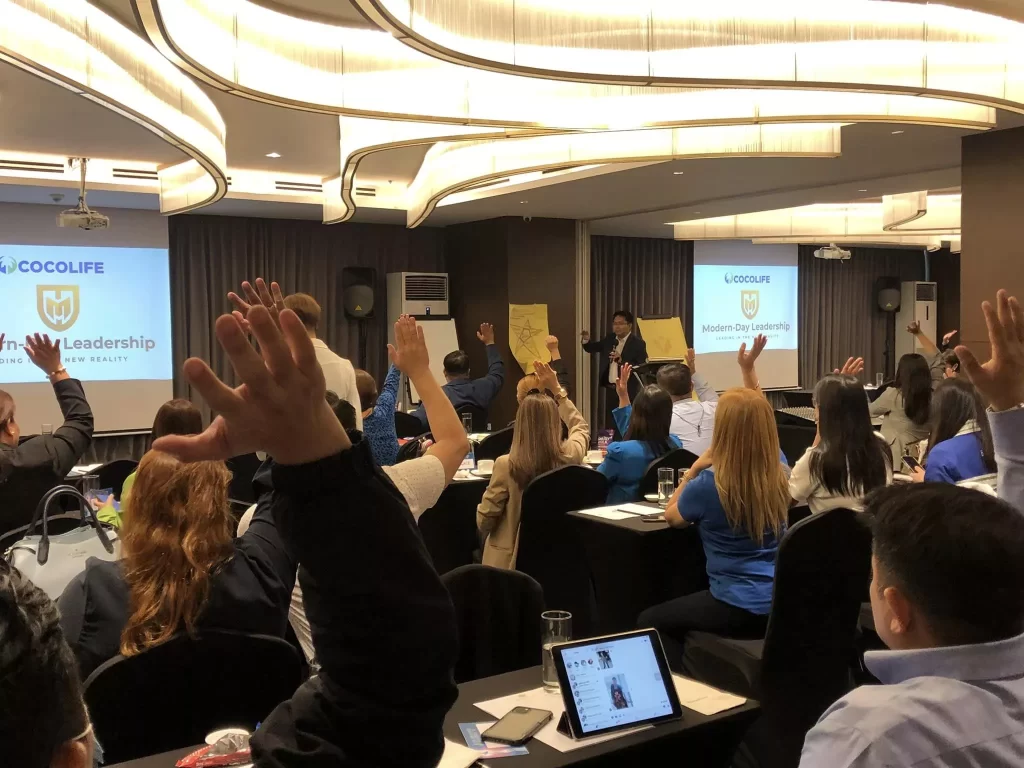
Modern-Day Leadership Training program is designed for managers, supervisors, soon-to-be-promoted leaders, and executives to upgrade their skills and attitude in learning their people.
With the new workforce (Gen Zs), this leadership program aims to give you upgraded and relevant information on the challenges leaders face today, including multi-generational communication issues.
By focusing on these five pillars (see image below), we can help you develop the right leadership style centered on values that can guide your team toward getting results for your company or organization.

These five pillars include:
- Modeling – Lead by Example
- Connecting – Lead by Heart
- Visioneering – Lead with Direction
- Empowering – Lead in Trust
- Modeling – Lead through Collaboration
Previous clients who requested this topic from Venchito include:

What makes the Modern-Day Leadership Program different?
1. It is centered on values.
Other leadership programs may be focused on developing skills, which is greatly important in today’s changing business landscape. However, I still believe in building the proper foundation of character for leaders.
If leaders operate on their personal values, aligning them hopefully with the values of their organization, they can be more effective in handling people in such a way that they do more than what is required of them.
They cater to the needs of their people instead of only trying to satisfy their desires and needs.
2. It contains relevant information.
I loved books, but some of the leadership books may not be relevant to today’s leadership culture. Leadership trainers must continually upgrade their materials to be more relevant in how organizations develop their leaders.
With the rise of technology and automation, how can leaders adapt to employees’ ever-changing needs and changing business landscape?
You can see the relevance factor in corporate training materials when the Filipino corporate trainer provides real-life examples and case studies in the workplace. All these give insights that training participants can take home to their workplaces.
3. It guides participants to develop leadership habits.
Modern-Day Leadership Program gives you a framework for the habits you have to build as leaders and tools and strategies you can utilize in different leadership situations.
When you’re still starting as a leader and have been leading people for a while, there are specific leadership theories and principles you must adapt to that situation.
Habits will help you teach discipline in your leadership life. That said, with our leadership training program, you can experience how to build healthy habits to support your everyday leadership role.
Bring Modern-Day Leadership Program To Your Company
Invite Venchito Tampon and his team to conduct a Modern-Day Leadership Training program so you can upgrade the leadership skills of your employees and executives. Contact us to set an initial meeting and get a free quotation.
2. Level Up Leadership by Francis Kong
Considered the top-ranked speaker, trainer, and business consultant, Francis Kong’s best-selling training program has helped thousands of leaders from different organizations across different industries.
I (Venchito) personally attended his Level Up Leadership in 2019, and I would say I’m a recipient of the valuable lessons and insights from Mr. Francis Kong himself.
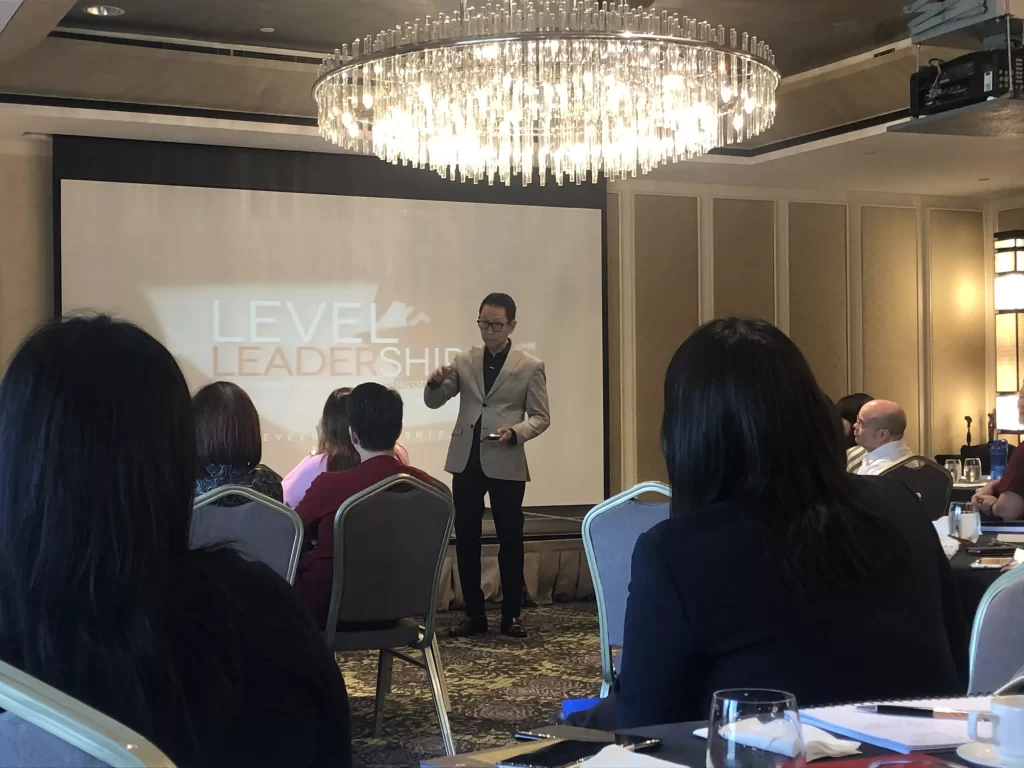
What I liked about Level Up Leadership?
- Leadership methodologies from different generations. Mr. Francis Kong will show you how leadership has evolved over 50 years from how Baby Boomers used leadership as a tool to manage their business to where it is today, working with the Generation Z workforce.
- It is centered on values. Though Mr. Kong will show you the exemplary leadership skills to pursue, including how to ask relevant questions and engage your people, you won’t miss topics about values and character development.
- The subject “servant leadership” is included in the program. As far as I remember, it is one of the last topics he discussed that shared how Jesus led his 12 disciples – which is the most impactful part of the program.
- Relevant case studies and group discussions. Mr. Francis wants his audience to engage with one another, which means group activities where sharing and discussion are highly encouraged. I loved this part because you’ll have plenty of time to network with like-minded individuals and learn how they apply leadership in their respective industries.

Who does Level Up Leadership cater to?
Intermediate to advanced-level leaders, i.e., executives, deans of schools and colleges, government officials, and high-level directors and managers. Most topics are advanced and well thought out towards a high-level knowledge. That said, the program is still excellent and applicable for newbie leaders.
3. Moving into Management by Boris Joaquin
This is another leadership training I attended in 2019.
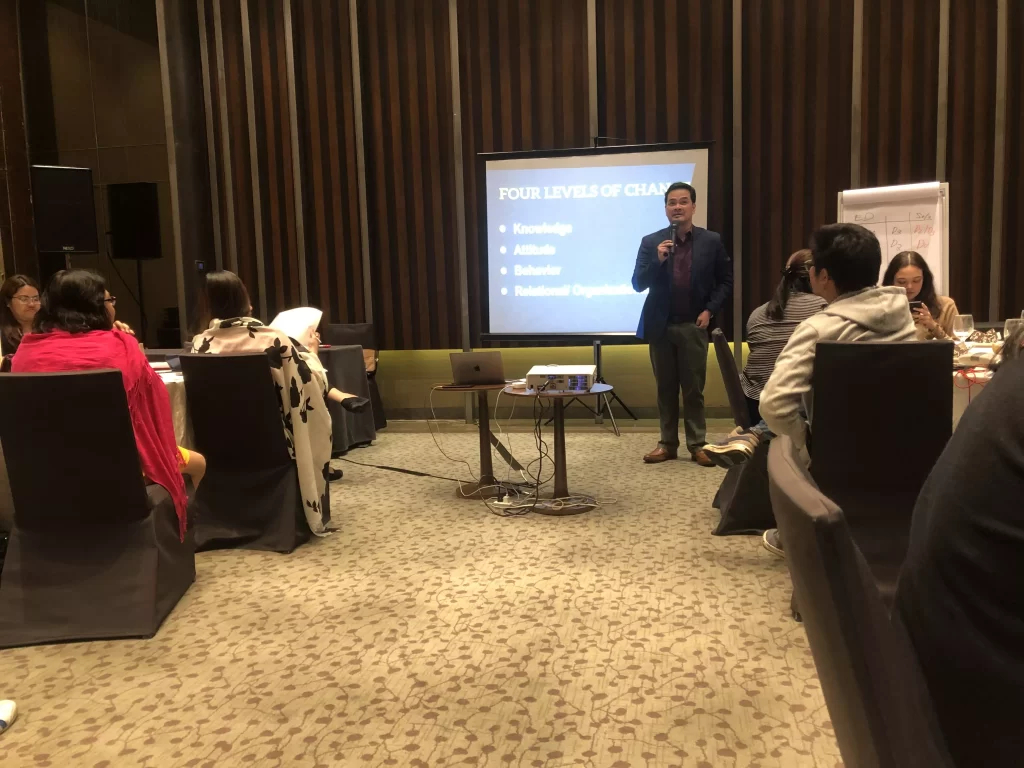
Boris Joaquin is one of the premier leadership corporate trainers in the country. Having been sought by the top 1000 corporations and SME leaders, Boris knew how to conduct leadership training that could best serve his audience.
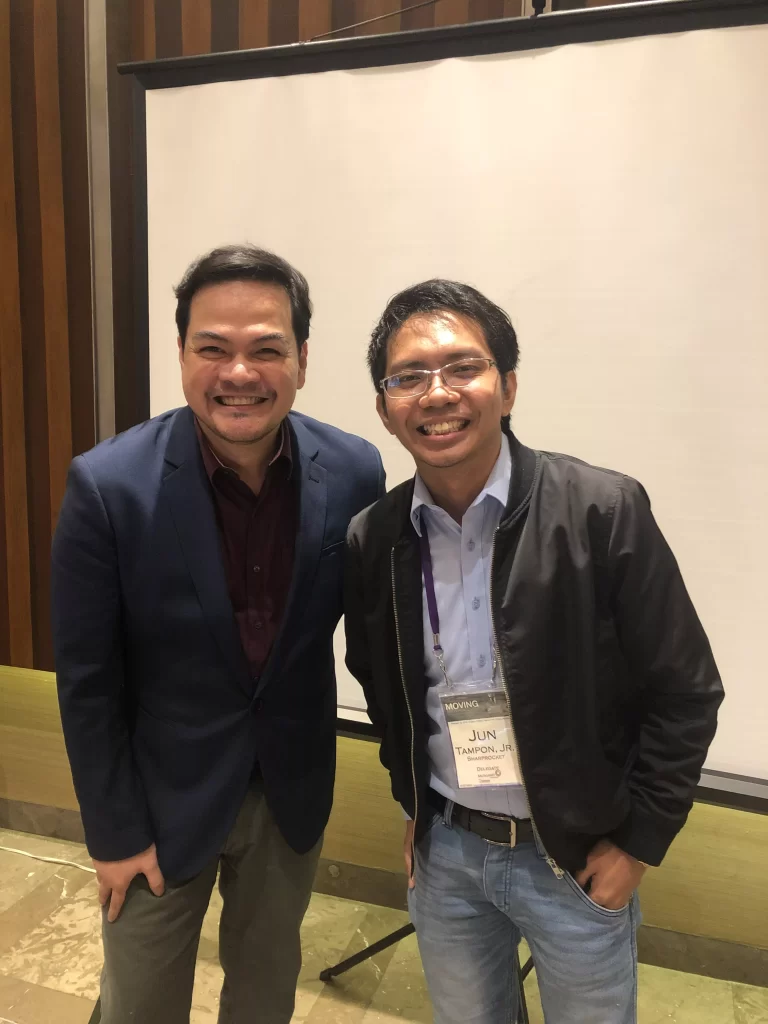
What I liked about Moving into Management?
- Easy to understand principles of management and leadership, i.e., the fundamental differences between management and leadership.
- Group activities to help you understand better yourself as leaders and how to apply specific topics to everyday living.
- Plenty of time to network with other corporate leaders.
- Fun and light environment. You would find yourself having fun while learning at the same time.
- Excellent workbook I can take home and get more insights from.
Who does Moving into Management cater to?
Moving into Management program is catered to rank-and-file employees or any position soon-to-be organization leaders. It is a preparatory training to help them understand what management and leadership is all about.
I believe this program isn’t for advanced-level leaders. However, some of the principles still apply to executives and directors in the company.
4. Step Back Leadership by Lloyd Luna
I haven’t attended any Step Back leadership program of Lloyd Luna. Yet, based on the videos and stories he posted, I can attest that his leadership program has truly helped many leaders in different organizations.
What I liked about Step Back Leadership
- Step Back Leadership is rooted in how ancient leaders lead their people and conduct succession planning programs.
- Local context. You would find the difference between how local leaders and Western counterparts lead their organizations. There is a significant difference; you would understand the principles behind how we are wired to be led.
- Simple to understand. You can have this leadership program for every level of employee – rank-and-file, managers, supervisors, and executives.
5. John Maxwell Leadership Trainings
Certified John Maxwell Trainers, including Ardy Abello, Anthony Pangilinan, and Mondo Castro, also brought Western leadership programs here.
Needless to say, Dr. John Maxwell is considered the world’s leadership expert who has written hundreds of books on leadership and success.
This is a testament to his global impact and the value and quality of his leadership programs.
What I liked about John Maxwell’s Leadership Training:
- Timeless principles. John Maxwell is pretty good at creating laws for every topic, including communication, leadership, and success. These laws are evergreen and can be applied to every context, industry, organization, country, and age.
- Simplicity. You don’t have to be highly educated to understand his principles. Maxwell is pretty good at simplifying things and making it easy for you to apply in everyday life.
- Inspirational. Most Maxwell training programs and books have an element of inspiration in them. Even just reading his books, you’ll feel a sense of inspiration to take action and level up your leadership game.
Key Takeaways
That’s it. Those are leadership training programs in the Philippines, some I’ve personally attended and reviewed, so you know what to expect in the corporate training.
If you’re looking for a corporate trainer to level up your leaders, contact us for a free quote on our Modern-Day Leadership Program.
How Much Does Leadership Training Cost in the Philippines in 2025?
How Much Does Leadership Training Cost in the Philippines in 2025?
Leadership training prices Philippines can range from ₱10,000 to ₱1,500,000 per program. Entry-level sessions may cost as low as ₱10,000, while multi-day, highly customized programs for senior leaders can go up to ₱700,000. Costs vary based on program scope, duration, group size, and the level of customization required.
Factors That Affect the Cost of Leadership Training
The answer, “it depends,” to the question, how much does leadership training cost? may surprise you, but it is the reality when you hire a corporate training provider to conduct leadership training programs or when you want to do it in-house with your L&D practitioners.
Professional Expertise
The expertise and reputation of the trainer significantly affect pricing. A trainer with in-depth experience or popularity in their field will command higher rates. Corporate training providers like Success Options Inc., Inspire Leadership, all founded by Francis Kong, and LJMB (Learning Just Made Better) by Louie Banta are known for offering high-quality programs, which may come at a premium price.
In this regard, you should do some research and ask for proposals and quotations to determine the cost of each leadership training program.
Duration of Training
Another factor impacting the cost of leadership training is its duration. How long or short it is depends entirely on the training needs of your leaders and managers.
For instance, leadership training can change from a two-day session to a series of modules covering 10 key areas such as:
- Leadership Communication
- Coaching and Mentoring
- Decision-Making and Problem-Solving
- The POLC Framework (Planning, Organizing, Leading, and Controlling)
The longer the duration, the more costly the training, as it covers each leadership area in detail. This is much better for facilitating a great learning experience for your participants.
Beware of training providers who’d like to conduct one-hour leadership training. Leadership training usually lasts half a day to weeks.
Number of Participants
The standard participant size for training is 25 to 30 individuals. Larger groups might be split into batches, increasing overall costs. For instance, a company needing to train 100 employees might run four sessions, each with a unique price. So paying P70,000 for 1 batch of 25 pax for your 100 employees will cost you P280,000.
Mode of Training
Given that today's workforce consists of hybrid teams, leadership trainers adapt to this changing learning need. There are usually two types of training modes today: on-site training and virtual training (another is a combination of two—hybrid training).
On-Site Training: In-person training costs more due to venue fees, travel expenses, and logistical requirements. And if it’s outside the metro, like the venue to be held is somewhere in Subic or Boracay, the leadership training costs adjust to that.
Virtual Training: This is typically less expensive but may limit hands-on engagement. Hybrid options can also be explored to balance cost and effectiveness. In our leadership training, we experienced all three training modes, which highly depend on what the clients want and how the participants could better adapt to the program.
Company Budget and Resources
Another significant factor in leadership training cost, of course, is the company budget and resources. If you’re part of the HR team of a startup company, it may not have a big budget compared to multinationals (assuming the startup company isn’t funded by any investor—in this case, it is a bootstrapped company).
That’s not to say startups don’t invest in leadership training. In fact, we’ve seen many startups today encouraging their leaders to be trained with us—it’s a matter of the decision of the top management.
Leadership Training Pricing Models
There’s no one-size-fits-all price point for leadership training programs. Differences in training needs, target participants, and training goals produce a sizable number of pricing scenarios.
To give you a hint, leadership training programs can fall either any of these (or a combination) of these pricing models:
Course Model
You’ll see a course model option for multi-national companies' leadership development programs. Leadership training comprises three or ten modules, or even more, each focused on a specific area, such as emotional intelligence, leadership conversations, or management essentials.
The course model usually works for companies with different management levels (top management, middle management, and lower management). Given that each management level requires a different leadership training curriculum, a particular corporate trainer would create customized and personalized training modules for each of these levels.
Hourly Model
Trainers who charge on an hourly basis usually want to work on short-term projects with clients. These projects could last an hour or up to one whole day, and they would include coaching sessions for each participant for an immersive learning experience.
This is very rare for corporate trainers, given that they usually charge for a day's training, which goes to the last pricing model.
Daily Model
Training costs are calculated per day. Depending on the factors mentioned earlier, a two-day leadership session may cost Php100,000 to Php500,000. At Rainmakers, for example, we conduct 1 day to 2 days for our Modern-Day Leadership Training. This ensures we covered all essential topics and that activities and workshops were adequately included in the training.
How to Get Buy-In for Leadership Training Programs
If you’re an L&D or HR professional, convincing top management to invest in leadership training is crucial. It could be a make-or-break scenario, as this is where the leadership training program will depend. If you can persuade them to invest (if they’re still not into it), hiring a corporate training provider to conduct leadership training programs is much easier.
Here’s how to get more buy-in support for your leadership training:
Influence Key Stakeholders
Present a strong case for leadership development. Don’t just mention you’ll conduct one at a particular quarter or month.
Highlight its benefits for improving productivity, employee engagement, and business outcomes. Today, we’ve seen several case studies in which L&D practitioners can now justify training spent as long as it helps the company achieve its goals and objectives.
Your ability to influence your higher-ups is also a good indication of how much you truly want leadership training in your organization.
Emphasize ROI
The language of business is numbers. Emphasizing the potential return the organization can make once training has been implemented could strengthen your case when you present it to top management.
Of course, realistically speaking, you can’t quantify learning, but at least in the grand scheme of things, you can help improve the KSA of your leaders, knowledge, skills, and attitudes—which can all correspond to certain quantifiable outputs for your organization.
One way to support you with this is to use case studies or data from companies within your level and industry. This would help management better understand the investment and impact of leadership training programs.
Start Small
Begin with a two-day training for a select group of leaders. If you have over a hundred managers and supervisors, start with a few to help the management see its impact weeks and months after the training.
This pilot program for a few leaders can help demonstrate the value of leadership training to decision-makers. And the more you see results (assuming you get the best corporate trainer in the Philippines), the more opportunities you’ll have to conduct the same training for your other leaders.
Partner with Experts
Work with trusted providers like Rainmakers, who bring experience and expertise. It may sound self-promotion, but a well-known provider increases credibility and ensures high-quality training.
The typical process for conducting leadership training programs starts by proposing three or more service providers. Management will decide which one best fits the company based on context, industry experience, facilitators’ level of expertise, and other related factors.
Plan and Budget Strategically
Allocate a portion of the annual budget for leadership training during strategic planning sessions. If you’re not part of the top management, you have to influence them to set aside a budget for corporate training.
It is easier said than done, but the only way to fully implement training for your leaders is to have it approved by the top.
Realistically, it is not easy to get a seat on the board and relay your case as to how training can impact the company's bottom-line goals. Most organizations are still reluctant to do this and would rather invest in technology and other business functions except human capital.
In this case, your abilities and skills to influence them are much more required.
Sample Cost Breakdown
| Training Type | Cost (Php) | Details |
|---|---|---|
| Basic 2-Day Training | 50,000 – 200,000 | Includes core leadership skills |
| Advanced 5-Day Program | 300,000 – 800,000 | Covers leadership strategies and coaching |
| Modular Program (10 Modules) | 500,000 – 1,500,000 | Comprehensive leadership development |
| Virtual Training | 10,000 – 50,000 | Per session, fewer logistics required |
Develop Future-Ready Leaders
Leadership training is an investment in building future-ready leaders.
Organizations can maximize the benefits of these programs by understanding the factors affecting costs and aligning them with company goals.
Whether opting for a basic session or a multi-module program, choosing the right provider ensures a meaningful impact on employee performance and organizational growth.
With the tips mentioned above on how to get more buy-in and support from top management, you’re likely to start having the confidence, trust, and courage to execute leadership training for your company this year.
What Kind Of Training Would You Provide To New Sales Managers?
If one set of employees has been overlooked for corporate training, it’s the team of sales managers.
One of the main reasons is that VPs and Senior Executives think these sales managers already have the competencies they need to succeed. Truthfully, like any employee, they need to ramp up their skills over time.
In this guide, I’ll share what kind of training you would provide new sales managers and share some of my personal insights as a corporate trainer and resource speaker.
Transitioning into a sales management role requires an arsenal of skills, from leading a team to managing processes and inspiring your sales agents to continuously invest in themselves so they can produce the company's desired output.
You may be confused about which one to start with, but below is a solid list of sales training programs you should start using to train your sales managers.
What Kind Of Training Would You Provide To New Sales Managers?
1. Consultative Selling
Gone are the days when you sold products one-time off, like a transactional type of selling when you went to groceries, malls, or brick-and-mortar shops.
New sales managers should understand that selling is more than just closing deals; it is purely solving customers’ problems. The better you solve, the higher the chances of achieving their sales goals.
I have an entire guide on consultative selling and B2B sales - so be sure to check it out.
Essentially, consultative selling involves understanding and assessing clients’ needs so that you can solve their problems with customized solutions from your offer.
It’s that simple. If sales managers can start selling the right way by wearing a consultant hat, they’ll be better able to attract qualified clients—people who need help and truly want to solve their problems.
Here’s a good idea to start training your team. Practice role-playing scenarios where managers must assess clients’ needs and recommend solutions. You can do so with a facilitator or an outsourced corporate training provider. Let Rainamakers help you if you want to be done right.
2. Negotiation Skills
Another training need for sales managers is negotiation skills.
In our experience as corporate trainers, we’ve seen this lacking with sales managers despite their years of experience in the industry. They’ve been doing the same thing repeatedly, expecting results, but they don’t see much to be satisfied with the outcome.
Train your sales managers to identify common ground and find win-win solutions for both parties (the client and you/your company as the solution provider).
They must know how to answer or handle objections and address clients’ concerns without compromising value. By using these sales techniques, your sales managers will be more equipped to close deals themselves instead of delegating these tasks without prior knowledge to their sales agents.
Remember: they can only share what they already have with their team. If they don’t have the skills they need, they can’t share them with others.
One exercise activity you can have with sales managers is stimulating high-stakes negotiations, during which they can work on their negotiation skills and evaluate strategies for reaching agreements.
You need an external perspective who knows how negotiations work. If you need negotiation skills training, contact our team, and we will provide it.
3. Effective Communication
Sales require the ability to communicate the results that you want your clients to get. This includes not only demonstrating features and benefits—which most salespeople focus on—but also strongly communicating your brand with finesse.
Effective communication training is essential for sales managers to ensure the team understands goals, targets, and strategies. This way, they can align their team toward having the same vision, mission, and action plans, better addressing issues and challenges, and ultimately getting to where they want to be at the end of the year.
Effective communication also helps them train themselves to provide construction feedback to their sales agents. One word makes a difference. If they miss out on providing guidance, they won’t see any improvement in sales results. That’s why having a strong communication skill set for sales managers can bring their team to the next level.
A good practice for this is conducting team meetings where managers can practice presenting objectives and delivering feedback. It is best to create an environment where it is good to learn, unlearn, and relearn new things—set some rules before doing the exercise.
If you need help, contact Rainmakers for effective communication training for your sales managers.
4. Virtual Engagement
In a hybrid world, virtual engagement is indispensable. Many salespeople now have systems for virtual engagement, as they can reach more sales prospects while having less stress to physically meet them (given the hassle of traffic we have here in the Philippines).
Managers must learn how to lead virtual meetings and use tools like Zoom, MS Teams, or Slack for effective remote communication. Thanks to 2020 happenings, Filipinos were pushed to learn technologies in the comfort of their homes to better market and sell their products or services.
Another upside of learning to engage in virtual activities is the ability to build rapport virtually through personalized approaches. Learning how to look at the camera every time you speak and using non-verbal languages to better communicate your message is a plus skill any salesperson, including sales managers, should practice and master.
One good workshop idea for this training area is hosting a mock virtual meeting where sales managers refine their online communication techniques. It is best to use the product or service you’re offering itself as an example.
5. Lead Generation (Prospecting)
New sales managers should know how to identify and nurture potential clients. If they just hand this critical component of selling to their sales agents, they won’t have a chance to improve processes for their sales teams.
Key skills in lead generation must include building a prospecting pipeline, which means learning how to use CRM systems to organize leads (there are many web tools - one, in particular, is Hubspot).
Another skill is lead qualification, which is learning to identify high-potential prospects among leads you collect or gather. From there, you should train your managers with follow-up strategies to maintain consistent communication without overwhelming prospects.
These can help your sales managers develop the mastery needed to attract a large number of prospects to their sales pipeline.
Real-World Task: Assign managers to create a lead generation plan targeting specific demographics or industries. In our sales training, we have an ICP (Ideal Customer Profile) worksheet activity asking our participants to create their ICP based on their preferred product or product category.
6. Sales Management and Leadership
Of course, given that we’re talking about sales managers, they should excel at sales management and leadership. They should have the mindset of both a leader and manager and transition from individual contributors to ones worthy of influencing others.
Sales management includes inspiring the team through appreciation, recognition, and goal setting. It also includes performance monitoring and training salespeople to identify KPIs to measure individual and team success.
Another key area is conflict resolution, which equips them to mediate disputes within the team (as they arise).
One perfect activity for sales management and leadership is role-play scenarios in which managers address underperformance or team conflicts. Although this activity may be too serious to conduct, it would really help them deal with it in actual work.
7. Personality Development Using the DISC Framework
Knowing your personality type helps you understand and accept your strengths and weaknesses. You can adapt to different situations by gaining strengths from other personality types and using them to your own advantage.
You can use the DISC framework to help your sales managers recognize the personality types of their team members and clients. This will also enhance their selling ability, as they will know how to adjust communication and sales strategies based on personality traits.
Hire a certified DISC facilitator to conduct DISC assessment training with your team and provide personalized coaching for better practical application.
Sales Managers Can Always Go To The Next Level
Beyond position, sales managers can invest time and resources to improve their skills and lead their sales associates in achieving results. With specific areas of sales training for managers listed above, they’ll be better equipped to overcome challenges in selling and create sustainable growth for their teams.
3 Best Sales Training Programs in the Philippines (2025)
Finding the right sales training program can be a game-changer for HR people or learning and development practitioners looking to level up their employees by increasing competencies.
Below are three of the best sales training programs in the Philippines, each designed to equip participants with essential skills and strategies to thrive in the dynamic world of sales.
3 Best Sales Training Programs in the Philippines (2025)
1. High-Impact Selling Training
By: Rainmakers
Best For: Sales professionals seeking advanced strategies for hybrid and virtual engagement.
Headquartered In: Metro Manila, Philippines
Industries: Retail, B2B Sales, E-commerce, and Professional Services
Strengths: Focus on modern sales techniques for hybrid work environments.
Pricing: Customizable based on company needs (Contact for details).
Recognizable Clients: Leading corporations across various industries.

Program Highlights:
This program focuses on equipping participants with cutting-edge sales strategies for both face-to-face and virtual selling. Participants learn the nuances of building a personal brand, managing client relationships, and leveraging tools to create a high-impact sales experience. Delivered by expert trainers from Rainmakers, the course is ideal for professionals looking to excel in a hybrid world.
Learn more about High-Impact Selling Training.
2. Art and Science of Selling
By: Jeff Manhilot, Inspire Leadership Consultancy, Inc.
Best For: Professionals and leaders from diverse fields looking to unlock the universal selling skill.
Headquartered In: Quezon City, Philippines
Industries: Leadership, Consultancy, and Corporate Training
Strengths: Unique integration of leadership principles and selling techniques.
Pricing: Available upon request.
Recognizable Clients: Executives and high-potential leaders from multinational companies.
Program Highlights:
This program, led by Jeff Manhilot, emphasizes the life skill of selling and its application beyond traditional sales roles. Participants discover practical steps to market themselves effectively, confidently navigate conversations, and achieve professional growth.
Jeff’s extensive background in leadership and sales ensures that this program combines theoretical insights and real-world strategies for success.
3. Essential Selling
By: Jerome Tuason
Best For: Aspiring and experienced sales professionals looking to build a strong foundation.
Headquartered In: Makati, Philippines
Industries: FMCG, Pharmaceuticals, and Corporate Sales
Strengths: Comprehensive approach to sales fundamentals and practical applications.
Pricing: Offered as a one-day workshop (Contact for details).
Recognizable Clients: Entrepreneurs, executives, and corporate teams.
Program Highlights:
This eight-hour workshop strengthens participants’ understanding of the 7-stage sales process. The program is facilitated by Jerome Tuason, a seasoned sales expert, and offers actionable techniques in prospecting, communication, and closing deals. It also emphasizes creating lasting customer relationships to ensure sustained success in sales.
Each of these programs is tailored to different needs, ensuring that sales professionals at all levels can find the right fit for their goals.
Whether you’re a beginner looking to build a solid foundation or a leader refining your sales strategies, these programs stand out as top choices in the Philippines.
How to Choose a Sales Training Program?
Choosing the right sales training program is a critical step in maximizing the return on investment for your learning and development needs, or it can be an additional expense that is wasted.
A well-suited sales training program provides tools and strategies that directly impact your performance and results.
Below are detailed guidelines to help you make an informed decision:
1. Assess Your Training Needs
Start by identifying the specific sales skills you want your sales team to improve. Ask yourself questions such as:
- Do I need to strengthen foundational skills like prospecting or lead qualification?
- Am I looking to improve specific techniques, like closing deals or handling objections?
- Do I want to adapt to modern sales environments like hybrid or virtual selling?
- Does each of my salesmen need to improve their presentation of our company’s products or offerings? Can they be more confident after the training?
- What advanced skills do my tenured salespeople need to level up with?
Having a clear understanding of your sales training needs helps you narrow down certain areas for improvement. It can help customize the sales training program, whether you want it to be in-house or outsource it to a training provider.
This would help you later in the training evaluation to assess whether the sales training itself has both individual effect on the participants and business impact to the organization.
2. Check the Trainer’s Expertise
The trainer’s background can significantly influence the quality of the program.
Some of our high-end clients look for trainers who:
- Have hands-on experience in sales across various industries. Insights by seeing common patterns in training different verticals can help educate participants with the best practices they can contextualize in their respective industries.
- Hold certifications or have recognition in sales coaching or training. In 90’s, two popular sales training certifications are Zig Ziglar and Brian Tracy. They’re both known for being the top sales trainer for global organizations.
- Demonstrate a proven track record of success in leadership roles or sales strategy development.
For instance, programs led by professionals with extensive experience in B2B, corporate sales, or specific industries offer actionable insights that align with your real-world challenges.
Given they get insights from experiences and expertise of their participants of different organizations, they can share real-world case studies and scenarios your audience can relate to.
3. Evaluate the Sales Training Program
The program’s content and outline should align with your learning objectives. Examine if the content:
- Covers essential topics like negotiation, relationship-building, and objection handling. There may be more to it, depending on the current context, such as how to do virtual presentations, especially for hybrid teams - overall, the essential topics must be covered in the sales training.
- Provides advanced modules for specific sales contexts, such as consultative selling or customer-centric approaches.
- Incorporates modern sales trends, including using CRM tools or virtual engagement strategies.
A comprehensive sales training program ensures you gain foundational and advanced skills contributing to long-term growth. It should balance both theories (i.e. principles) and practical application to create a holistic learning experience for participants..
4. Consider Industry Focus
Some programs specialize in addressing the nuances of particular industries. Whether you are in B2B, FMCG, retail, or healthcare, a program tailored to your industry:
- Reflect on the unique challenges and opportunities in your field.
- Use case studies and examples relevant to your work environment.
- Enhances your ability to apply learned techniques directly to your role.
Choosing an industry-specific program ensures relevance and applicability to your day-to-day tasks.
It’s not that easy to find a corporate training provider who can customize a sales training program to fit to your current context. Today, the best corporate trainers are the ones who can both customize their training programs based on the organizational’s training needs as well as individual learning needs of participants.
The latter is hard to find, as you would normally just observe it during the training delivery and training evaluation.
5. Look for Hands-On Training
Theoretical knowledge is essential, but practice solidifies learning. Opt for programs that include:
- Role-playing exercises to simulate real-world sales scenarios.
- Practical activities like drafting proposals or conducting mock sales presentations.
- Peer-to-peer feedback and coaching from trainers.
Hands-on training allows you to refine your approach, receive constructive feedback, and build confidence in applying new skills.
Any corporate training program, including sales training program must include activities, role-play and workshops to immediately apply principles and tips shared by the sales trainer.
6. Verify Flexibility
Sales professionals often juggle busy schedules, so flexibility is critical. Check if the program offers:
- Modular sessions that allow you to learn at your own pace.
- Options for in-person, online, or hybrid learning formats.
- Customizable programs tailored to your organization’s specific needs.
Flexibility ensures that training fits seamlessly into your professional and personal commitments.
In many organizations, sales people are very busy professionals, so having a 1-day schedule to train them, can be challenging. Find a corporate training agency who can adjust to your schedule, if it’s possible.
7. Read Reviews and Testimonials
Past participants’ feedback provides valuable insight into a program’s effectiveness. When reviewing testimonials, focus on:
- Specific outcomes achieved by previous attendees, such as improved sales performance or client acquisition.
- Experiences shared about the trainer’s teaching style, course content, and overall engagement.
- Ratings on the program’s relevance, applicability, and ROI.
Authentic reviews can help you gauge whether a program delivers on its promises.
At Rainmakers, we have a couple of testimonials from our past and current clients, giving you the preview of how our actual sales training look like, and how it benefits our training participants.
8. Examine Post-Training Support
Practical training doesn’t end when the program concludes. Look for programs that provide:
- Post-training materials, such as guides, templates, or toolkits.
- Access to trainers for follow-up questions or advice.
- Networking opportunities with other participants to share experiences and strategies.
Post-training support enhances retention and helps you implement what you’ve learned effectively.
In 5 levels of training evaluation, two of which, learning reaction and retention can be both applied after every training delivery. We typically provide our training participants an evaluation form they have to fill up, for us to see their main takeaways and how they could apply learnings to their day-to-day work.
9. Compare Costs and ROI
While pricing is an essential factor, focus on the value you will receive. Consider:
- The program’s cost is relative to the skills and certifications it offers.
- Long-term benefits include increased sales, better client retention, and improved confidence.
- Additional perks, like access to exclusive resources or future discounts.
Investing in a high-quality program can yield significant returns in your career and business outcomes.
In fact, budget must be one of the top considerations before searching for potential training providers. As this would also play crucial when picking high-quality sales trainers (as most will charge premium given their extensive experience and expertise).
Set Non-Negotiables and Negotiables When Choosing a Sales Training Program
Choosing the right sales training program requires careful consideration of your goals, the trainer’s expertise, and the curriculum’s relevance.
By following these guidelines, you can select a program that empowers you to succeed in sales, whether through closing more deals, building stronger client relationships, or adapting to new selling environments.
A thoughtful decision ensures your training investment translates into measurable career success.
B2B Sales: Everything You Need to Know
B2B sales is the process of one business selling products or services to another business.
Most people are familiar with B2C (Business-to-Consumer) sales because they target regular people. However, in most of the sales training we did for companies, we always encountered B2B selling.
One example of B2B selling is my SEO services at SharpRocket, which cater to tech and SEO agencies outsourcing their link building work. The company website hosts this blog, Rainmakers, as we sell corporate training programs to HR people.
Why Salespeople Struggle with B2B Selling?
Selling in the B2B space is often challenging for salespeople. It’s much easier to sell a skincare product to tens of people than a software solution to a healthcare company.
A typical salesperson can quickly develop the skills to sell B2C products, as only basic product knowledge and a specific repertoire of selling skills and selling types are needed to achieve a sales quota.
However, in B2B selling, it is not only knowing the product features but truly understanding different measures of success—i.e., understanding the multiple stakeholders of your target companies.
The sales cycle for B2B takes longer, given that companies need 2 to more approval steps before making a final decision to choose you as their solution provider.
Over the years, I’ve observed that many salespeople who master B2C selling struggle with B2B selling, given that they rely heavily on generic pitches and scripts.
Below are some of the best B2B sales techniques we practice at Rainmakers, Hills & Valleys Franchising, and SharpRocket.
B2B Sales Techniques
Success in B2B sales requires a structured and systematic approach. Here are vital techniques to help you close more deals and build long-term client relationships.
1. Defining Your Target Persona
The first step in effective B2B sales is identifying your target persona. Based on data and insights, a target persona represents the ideal customer, helping salespeople focus their efforts on the right prospects.
By identifying your target persona, you focus resources on selling to specific target consumers who will likely have a more profound need to purchase your solutions.
In my sales training, I teach that there are three categories to defining your target persona, these include:
- Demographics - age, location, income level, gender, marital status, etc.
- Psychographics - interests, attitudes, beliefs, pain points, etc.
- Firmographics - technology adoption, decision makers, company size, revenue level, etc..
In B2B selling, we mainly focus on firmographics to see if the target business is ready to purchase our solutions. For instance, you could sell a desirable high-income ticket to the market. Still, in a later discussion stage, you find out they’re not ready to utilize it due to a lack of technological resources to adapt to the solution.
In addition to the factors mentioned above, here are more questions to ask in firmographics:
- What industries or sectors are you targeting?
- What are the key characteristics of companies that need your product? Consider factors like company size, revenue, and geographical location.
- Who are the primary stakeholders within these companies? Identify their job titles, roles, and responsibilities.
As you discuss it with your team, you become more aware of the right persona to target with your sales strategy.
For example, if you sell software solutions, your target persona might include IT managers or CIOs at mid-sized companies in the healthcare industry. Knowing this allows you to craft messaging and outreach strategies that resonate with their needs.
2. Identify Key Roles in the Decision-Making Process
B2B sales involve multiple roles in the decision-making process. To close deals effectively, you must understand these roles and tailor your approach accordingly. Here are the three leading roles to consider:
Decision-Maker
This person has the authority to approve or reject a purchase. They often hold senior positions like CEOs, department heads, or procurement managers.
Decision Messenger
This person gathers information and communicates it to the decision-maker. They could be mid-level managers, or team leads tasked with evaluating solutions.
Decision Influencer
This person influences the decision by providing recommendations or sharing insights. They may be end-users or subject-matter experts.
To identify these roles:
- Ask questions during conversations to understand the company's buying process.
- Research the company’s structure on LinkedIn or its website.
- Observe how stakeholders interact during meetings or calls.
For example, suppose you’re selling a marketing automation tool. In that case, the decision-maker might be the Marketing Director, the messenger a Marketing Manager, and the influencer a Digital Marketing Specialist.
Learning about the critical roles in your target business to present with your product sales presentations helps you customize your pitches to resonate well with the clients you’re dealing with.
After your product presentation, you would only have a sense of how long it will take them to decide. If you’re talking to the decision messenger and influencers, expect you to schedule another meeting with their decision-makers. All these factors can assist you well in preparing your B2B sales presentations.
3. Consultative Selling (Solution Selling)
Consultative selling focuses on solving the customer’s problems rather than pushing a product. It involves understanding the customer’s needs, challenges, and goals and offering value propositions.
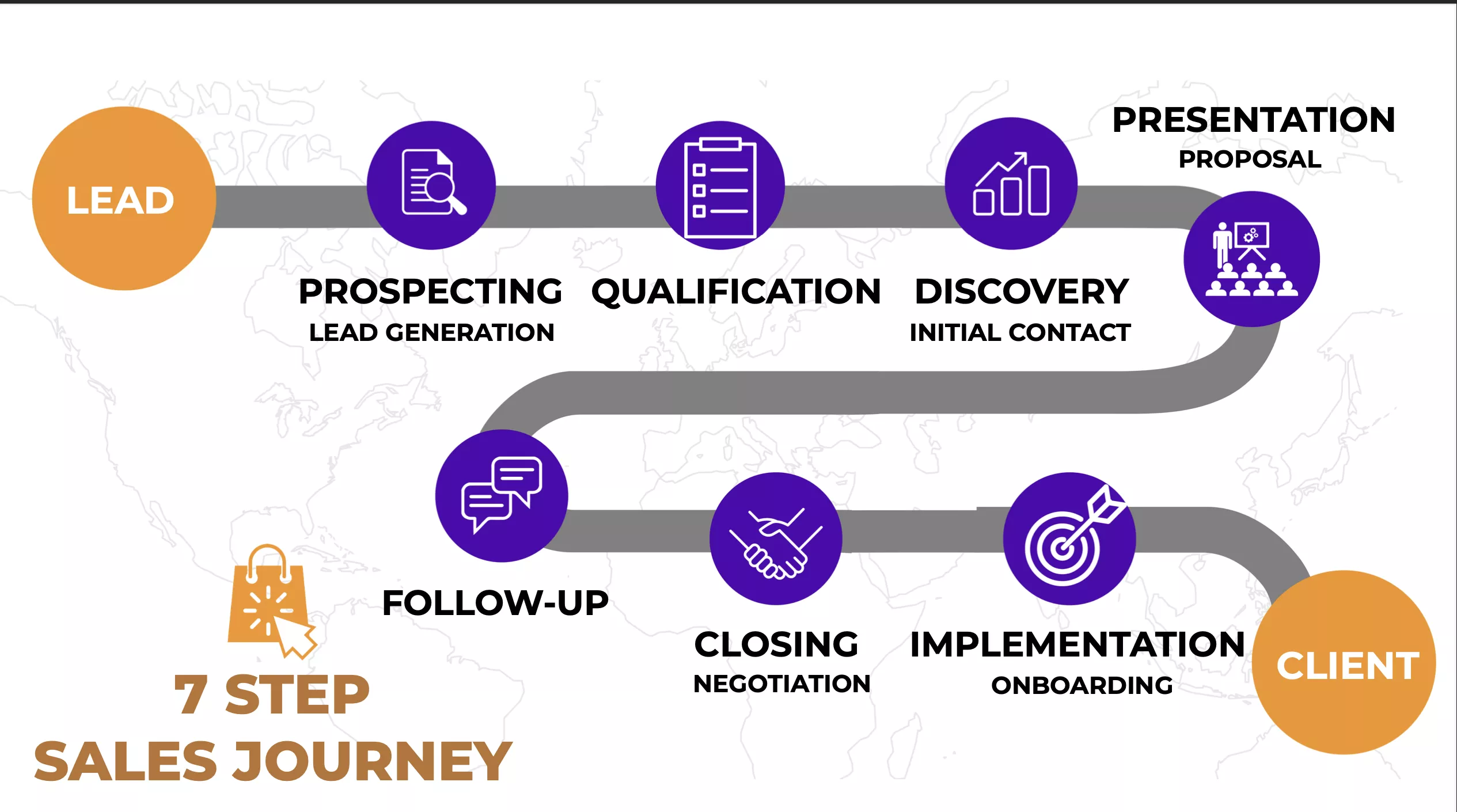
In B2B selling, consultative selling works well because it addresses every challenge, concern, and pain point as potential clients go through the sales cycle. It may take time for the sales hustlers, but it remains vital and lucrative for the patient sales teams.
Today, salespeople must act like consultants. Consultants ask questions and provide valuable and customized recommendations that address their clients' gaps and problems. This skill is much more needed, given that more and more decision-makers are becoming skeptical about purchasing a solution that fits them.
Steps to implement consultative selling:
- Ask Open-Ended Questions: Start by understanding the customer’s pain points. For example, “What challenges are you facing with your current system?”.
- Listen Actively: Respond to the customer’s answers and dig deeper if needed. This helps build trust and uncover additional needs.
- Provide Customized Solutions: Based on the information gathered, explain how your product addresses their specific challenges.
- Focus on Benefits, Results, and Experiences: Highlight the outcomes they can achieve with your solution, such as increased efficiency, reduced costs, or higher revenue.
One sample statement you could say, instead of “Our software automates tasks”, a consultative salesperson might say, “Our software can save your team 10 hours a week, allowing them to focus on strategic projects.”
4. Improve Product Presentations
A strong product presentation is essential for converting leads into customers.
Given that you’ll have several meetings before closing a sale in B2B, knowing how to craft presentations and deliver them effectively can make or break your sales success.
Here’s how to improve your product presentations:
Structure Product Presentations Systematically
In my presentation skills training, I teach the 4Cs in structuring presentations. These include:
- Core Idea - what’s your one big message?
- Compelling Reason - why should the person you’re talking to should care about your presentation?
- Content - What are the three main points that support your core idea? You can have many points to say, but drill them down into three points.
- Call-to-action - what are one or two things you want your audience to take away from your presentation?
End with a Clear Call to Action
Always end your presentation by guiding the customer on the next steps. Examples of effective calls to action include:
- “Let’s schedule a demo to show you how this works in real time.”
- “I’ll send you a proposal, and we can discuss it further next week.”
A clear call to action helps the decision maker, influencer, or messenger think about your product presentation, assisting them better in their decision-making process. You can check out my guide on advanced presentation skills.
Add Stories to Demonstrate Experience and Results
Stories help customers visualize how your product can work for them. Share case studies, testimonials, or success stories to make your presentation more engaging.
For instance, you can provide case studies related to the product you’re offering, such as, “A client in the retail industry faced similar inventory management issues. After using our software, they reduced stockouts by 30% in just three months.”
More Practical Tips for B2B Sales Success
To further improve your B2B sales approach, keep these practical tips in mind:
Build Relationships
B2B sales are relationship-driven. Focus on building trust by staying consistent, following up promptly, and delivering on promises.
Be more relational than transactional. Clients would feel that you’re just in it for the money and not for providing value to the relationship.
Leverage Data
Use data to support your claims and show the value of your solution. For example, share metrics, graphs, or performance reports demonstrating how your product can improve outcomes.
Include key insights in every piece of data you share so your clients can easily grasp what you want to emphasize.
Personalize Communication
Tailor your emails, calls, and presentations to each customer. Avoid generic messaging and focus on addressing their specific needs.
Be a more effective communicator by using words to match user intent and drive potential clients to the later stage of the decision-making process.
Invest in Training
Continuous learning is critical in B2B sales. Attend workshops, read books, and practice your skills regularly.
Start investing in B2B sales training to equip your salespeople with the tools and strategies to navigate the complexities of selling to businesses.
All the tips mentioned above will be part of the course outline we send our prospective clients during sales training.
B2B Sales Require Patience and Persistence
You can close more deals and build lasting client relationships by defining your target persona, understanding decision-making roles, adopting consultative selling, and improving product presentations.
Start implementing these techniques today to see measurable improvements in your sales performance.
Problem Solving and Decision Making (PSDM): A Guide Using the SAPADAPPA Framework
Problem-solving and decision-making are crucial skills in both personal and organizational contexts. For individuals, they enable objective choices, while in organizations, especially as one advances through the ranks, they become essential to navigate increasingly complex situations.
Someone who knows how to solve problems efficiently has higher chances of getting promoted in the corporate world, as it demands more than just technical skills. PSDM is actually a thinking skill.
Effective problem-solving and decision-making (PSDM) also requires the right attitude toward challenges. If your initial reaction to problems is avoidance, the PSDM approach will likely feel ineffective. A proactive approach to challenges is essential to maximize your PSDM capabilities.
This guide will take you through the SAPADAPPA framework, a structured approach designed to help tackle problems methodically. SAPADAPPA, coined by problem-solving and management experts, stands for Situation Analysis, Problem Analysis, Decision Analysis, and Potential Problem Analysis.
Each phase offers a step-by-step breakdown of activities designed to simplify complex decision-making and problem-solving situations. Let’s explore each stage in detail.
What is SAPADAPPA Problem Solving Framework?
The SAPADAPPA framework is based on the Kepner-Tregoe Method, a systematic approach developed by Charles Kepner and Benjamin Tregoe in the 1960s. These researchers identified a need for structured problem-solving and decision-making processes to improve critical thinking in business contexts.
Their methodology introduced a sequential, analytical process to assess situations, identify problems, make decisions, and analyze potential risks—a foundation that SAPADAPPA builds upon.
While the SAPADAPPA acronym is unique, the principles it encompasses reflect the foundational ideas of Kepner-Tregoe, adapted to emphasize clarity, objectivity, and structured decision-making.
This adaptation has made it widely applicable across various industries, helping individuals and organizations manage complex problems with a strategic, disciplined approach.
 Step 1: Situation Analysis (SA)
Step 1: Situation Analysis (SA)
Objective: Gain a comprehensive understanding of the current situation and clarify the primary concerns.
When beginning any problem-solving process, it’s crucial to assess the situation from all angles.
Begin by listing down all concerns or issues, both large and small, that are currently causing unease. This step doesn’t involve analyzing or solving these issues; rather, it focuses on recognizing everything that’s potentially problematic. Here are some ways to make the most of this step:
Conduct a Brain Dump: Write down everything that’s causing friction, worry, or potential risk. At this point, refrain from categorizing or prioritizing—simply get all the concerns onto paper.
Don’t Limit Yourself. Input as many items that has been bugging and bothering you. The upside of this activity is it allow your brain to dump all its items and put them in the proper place -- paper.
Define the Scope: Determine what’s within your control to address and what may need higher-level intervention. This scope-setting helps allocate your focus where it will be most effective.
Key Tips
- Encourage open discussion among team members if working in a group. Diverse perspectives often highlight areas that may otherwise be overlooked.
- Use visual aids, like mind maps or lists, to organize concerns and facilitate clearer thinking.
- You can invite external experts and consultants to help you guide and put all items you need for a specific situation. The more complex the working environment is, the more inputs you need to better identify issues and concerns.
Step 2: Problem Analysis (PA)
Objective: Understand the root causes of identified problems.
Problem analysis is where you dig deeper into the specific issues identified in your situation analysis. This phase involves methods that help uncover why problems exist and how they impact the broader situation. Effective tools include:
- 5 Whys: Continuously asking “Why?” to each answer obtained helps drill down into the root cause of a problem. This method is especially useful for isolating singular issues. The best of 5 Whys is determining causes that are controllable, which means something that are within your scope and reach. For instance, don’t include traffic jam as one of the reasons of personal unproductivity.
- 7 Ms Framework: This approach categorizes causes under Man, Machine, Method, Material, Measurement, Mother Nature, and Management, allowing a structured examination of contributing factors. It is especially useful in organizational settings where multiple variables are at play. Some simply use 5 Ms of Management, whichever works for you.
- Fishbone Diagram (Ishikawa): This visual tool helps identify potential root causes by branching out possible factors under specific categories. It’s beneficial for complex issues where many factors might be contributing to the problem.
Key Tips
- Ensure objective problem analysis. Avoid jumping to conclusions or prematurely focusing on solutions.
- Include relevant stakeholders in the process to capture a holistic view of the problem.
- Gather as many data for a specific root cause. Don’t assume. Be more objective in your problem analysis approach.
- Create a problem statement. For instance, a clear problem statement would be: “As of today, 3 of Rainmakers’ loyal repeat clients have 60-day past due payables amounting to a total of Php 225,000.”
Step 3: Decision Analysis (DA)
Objective: Establish criteria and make well-informed choices.
After thoroughly analyzing the problem, it’s time to make decisions that align with both the organizational goals and the immediate needs of the situation. Decision analysis is guided by a structured approach to weighing options based on established criteria. Here’s how to proceed:
Establish Decision Criteria: Define what’s non-negotiable (must-haves) and what’s flexible or negotiables (nice-to-haves) in the decision-making process. This clarity will help you prioritize your options effectively.
Generate Possible Solutions: Brainstorm all potential solutions without dismissing any immediately. Each option may contain viable elements, even if not selected in its entirety.
Assess Each Option Against Criteria: Use your must-haves as a baseline to filter out solutions that don’t meet core needs. Once filtered, weigh each solution according to the nice-to-haves, allowing a comparative ranking based on value.
Use ECTEA criteria to evaluate solutions to problems. ECTEA stands for Effectiveness, Cost, Time, Effort, and Acceptability. Here’s a quick explanation of these five criteria:
- Effectiveness - Does the solution truly eliminate or reduce the problem?
- Cost - Will the solution require too much money? Is it within the or over budget?
- Time - Will the solution take only a short amount of time to complete?
- Effort - Will the solution be easy to implement? Do we need to learn a new skill to get this done?
- Acceptability - Will the solution earn the respect and cooperation of clients/stakeholders that you want to please?
Select the Best-Fit Solution: The option that meets all the must-haves and maximizes the nice-to-haves becomes the ideal choice. While considering the option that meets the highest rating for all ECTEA criteria.
Key Tips
- Include only relevant people to the decision making body.
- Involve key stakeholders in decision-making to gain buy-in and ensure comprehensive perspective.
- Utilize decision matrices or scoring systems to quantify how well each option meets your criteria.
Step 4: Potential Problem Analysis (PPA)
Objective: Anticipate and mitigate any problems that may arise from your chosen decision.
Once you’ve made a decision, it’s crucial to think ahead and prepare for any challenges or risks it might bring. The Potential Problem Analysis phase focuses on proactive troubleshooting to minimize negative outcomes before they occur.
- Identify Potential Problems: Consider the possible consequences or issues that might arise from your decision. Aim to identify even low-probability but high-impact risks.
- Assess the Likelihood and Impact: Rank each potential problem by how likely it is to happen and the severity of its impact on your goals. This helps prioritize which risks need the most attention.
- Develop Contingency Plans: For high-priority risks, prepare a plan that outlines steps to take if the problem does occur. Having a contingency strategy can reduce disruption and facilitate quick responses.
- Implement Preventive Actions: Where possible, take proactive measures to minimize risk exposure. This could mean adjusting aspects of the chosen solution or preparing resources in advance to address potential issues.
Key Tips
- Involve team members in risk assessment for collective brainstorming on mitigation strategies.
- Consider using tools like Failure Mode and Effects Analysis (FMEA) to systematically evaluate risks and controls.
Applying the SAPADAPPA Framework Effectively
SAPADAPPA provides a structured yet flexible approach to problem-solving and decision-making. Here are some general guidelines to keep in mind when applying this framework:
- Stay Objective: Throughout each phase, focus on maintaining an objective and analytical perspective. Personal biases or assumptions can obscure the root cause of problems and lead to suboptimal decisions.
- Collaborate: Problem-solving in an organizational context often benefits from collaboration. Different perspectives can provide invaluable insights that help uncover hidden aspects of problems and improve decision-making quality.
- Document: Keep a record of each stage of the process, including criteria for decisions, analysis of each option, and identified risks. Documentation is useful for transparency and for revisiting decisions if issues arise later.
- Review and Reflect: After implementing your decision, reflect on the outcomes and the effectiveness of the PSDM process. Continuous improvement is integral to refining your problem-solving and decision-making skills over time.
By following this SAPADAPPA guide, you’ll find that even complex problems and decisions become manageable through clear, systematic steps. Mastery of PSDM equips you to make more informed, objective, and impactful decisions both in personal and professional settings.



